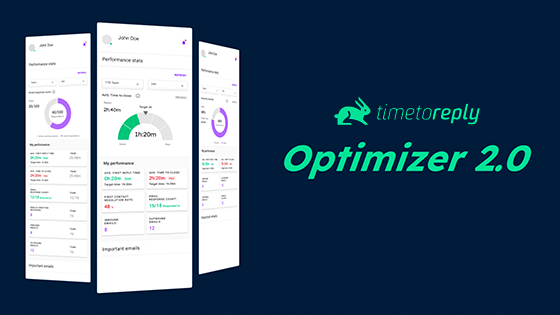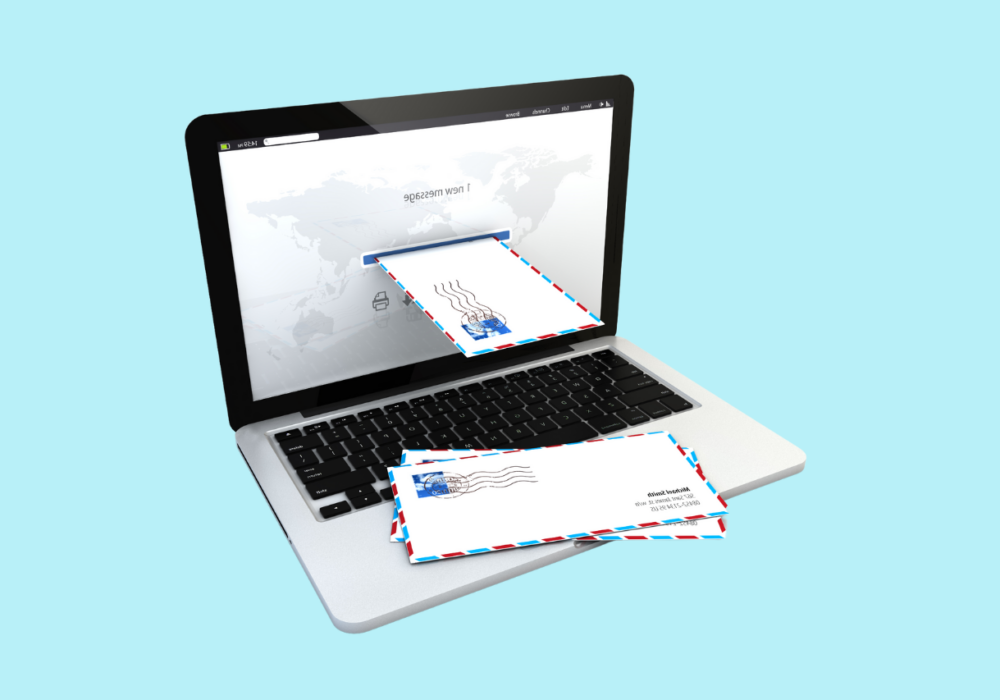If you regularly communicate with customers and sales leads over email, then you need to invest in making it an excellent experience for everyone you’re engaging with.
The best way to start is by improving your email etiquette and creating best practices and targets for your team.
If you can ensure every customer and sales leads feels that you’re attentive and responsive, you’ll close more new business and leave your existing customers satisfied with the level of service you’re providing.
In this article, I’ll show you why email response time etiquette matters and actionable ways for you to improve it at your company.
Email response time etiquette is the policy and approach you have for replying to incoming emails from customers, support tickets, and sales leads.
Your company needs to ensure your email response time etiquette matches the expectations of anyone you’re interacting with. If you can consistently reply quickly, your customers will know exactly what’s going on, and what to expect from you next.
Ideally, you need to reply to all of your emails in under one hour.
As a business owner, you need to be professional and that includes setting expectations for how fast you respond to emails. It’s good practice to set guidelines on when you’ll get back to your customers so they know what the expected response time is.
Your sales leads expect you to get back to them quickly.
Research from Harvard Business Review found that companies that replied to sales leads in under an hour have 7x more conversations with leads than companies that leave leads waiting.
By regularly replying to your leads quickly, the bottom line is that you’ll have more conversations with qualified leads and be more likely to hit your revenue targets every quarter.
Customer support is another area of your business where email etiquette is key.
Salesforce Research found that 89% of people say they’re more likely to make a repeat purchase after a good customer service experience. The same study also found that almost 8 out of 10 customers would be willing to keep working with a company that has excellent customer service, even if the company makes a mistake.
The more effectively your customer service team can communicate with and keep your customer base happy, the longer they’ll stick around, and the more money they’ll spend on your products or services.
The first key rule is to always assume your customer expects a reply.
There are often moments when it’s easy to ignore an email at first. For example, if a sales lead fills out your demo booking form to book a call with you, you may assume they’re happy waiting until the call to hear from you.
But, a simple email asking if they have any immediate questions, or simply acknowledging their inquiry, can have huge benefits.
Research has found that you can see a 341% lift in lead qualification simply by responding immediately to your sales leads.
Because most companies ignore their sales leads until it’s time to talk, replying quickly will help you stand out from the competition.
The same applies to customer service questions. Even if you can’t solve a problem immediately, replying to your customers telling them that you’re on the case, with details on when you expect the problem to be solved, will put them at ease and improve how happy they are with your customer service.
Your customers are busy and they don’t want to feel like an interaction with your company is more effort than it’s worth.
A crucial part of good email etiquette for both customer service and sales is to always review your email to ensure what you’re talking about is crystal clear.
If a customer reads your email and has to reply asking you to clarify, you’re forcing them to use their time in a way they didn’t intend.
To make sure every email your team sends is easy for your customers to understand, we’d recommend implementing a style guide or internal documentation for email style and how to talk about technical topics with customers.
Imagine a complicated support ticket comes up. Your first instinct is to start looking into the problem and finding a way to solve it for your customer. However, what you may be ignoring is that the customer who submitted the support ticket is now waiting, unsure what’s happening with regards to their issue.
A simple, practical, and high-impact step to improve your email etiquette is to acknowledge every email that lands in your inbox.
For example, if you receive a support ticket that will take 3 hours to solve, you can reply as soon as the ticket comes in, telling your customer that you’ve received their ticket and are looking into it now.
It’s a simple and easy-to-implement step that will make every customer feel more listened to, and feel more satisfied with their support interaction.
What isn’t measured isn’t managed. To ensure you and your team stick to your email etiquette goals of replying quickly to inquiries and are making customer happiness your priority, you need to set clear KPIs.
For example:
These goals will vary depending on someone’s role at the company. For example, your software developers won’t need to reply as quickly to emails as your support or sales team.
But, the key is that you need to set targets if you expect your team to treat email etiquette as a priority in their day-to-day work.
Great email etiquette doesn’t mean your team needs to feel under pressure all day, worried about leaving their inbox in case they miss an email.
You can leverage automation to improve your email etiquette without needing to monitor your inbox 24/7.
First, you can set up autoresponders for incoming emails. For example, once a support ticket comes in, have an email sent to the customer automatically with key details about their ticket and what you’re doing to resolve it.
If your team needs to learn more, they can reach out directly to the customer to gather the details they need. But, the simple act of automatically acknowledging that their issue is being looked into will leave them confident in your ability to solve the problem.
You can also implement a customer service management system like Zendesk, Freshdesk, or Front. Tools like these help your team manage tickets and easily tag each other onto emails that need attention. Using one of those in combination with an email productivity tool like timetoreply is a perfect way to create a central hub for your customer email interactions and ensure your customers and leads are receiving the treatment they expect.
One of the hardest parts of maintaining good email etiquette across your company is sticking to your new best practices.
To help your team create goals and measure your email performance, you can use timetoreply.
Our platform integrates with your inbox, whether it’s Outlook 365, Gmail, or IMAP. As soon as you’ve integrated timetoreply with your team’s inboxes, you’ll see data on key metrics such as:
You’ll have all of the information you need to see if you and your team are hitting your email etiquette targets and being as responsive as you need to with customers and leads.
You can track performance across individual and team inboxes to see granular performance reports and make the right decisions for your business.
It’s one of the most powerful ways to improve email etiquette across your company, and our clients like Swift Momentum have seen email reply times improve by over 300%, leading to their customers receiving replies between 3x and 4x faster than before — even with their team working from home.
Good email etiquette is a must for any company that regularly communicates with clients and sales leads.
If you can consistently reply quickly and show your customers that you’re there when they need you, they’ll see you as a trusted and valued partner, and stick with you for the long term.
Improving your email etiquette doesn’t need to be complicated, either. Create a set of best practices, automate repetitive work using auto-responders, and use software like timetoreply to measure your performance and find areas to improve.



Trusted by high-performing inbound sales teams and customer-facing teams globally.
Close more deals and delight more customers with the faster, smarter, deeper email analytics and performance optimization software that works straight from your team’s inbox.